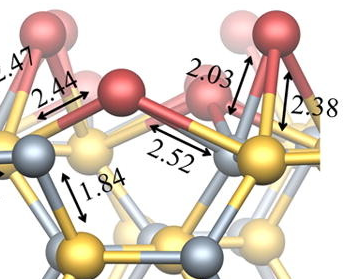 Stucture and electron affinity of (1120)-X 4H-SiC surface
Stucture and electron affinity of (1120)-X 4H-SiC surface
Control over the chemical termination of SiC surfaces is of great importance for the material in high temperature and hostile environment applications, where 4H-SiC in particular enjoys frequent use in areas including sensors and MOSFETs. Despite this, a wealth of surface specific data for the 4H polytype is yet to be accounted for, even under the most basic of terminations. Detailed structural and surface electronic properties highlight areas in which the use of SiC can expand and excel. In this work, we report density functional calculations on the effect of electron affinity upon adsorption of a variety of elements and their stability on the non-polar (1120) surface. We find that monolayer hydrogen and lithium termination work to reduce the electron affinity to 1.86eV and 0.08eV respectively, whereas for fluorine and chlorine it increases to large positive values of 5.05eV and 3.90eV respectively. All reactions with the unterminated surface are exothermic. In addition, lithium termination generating a near zero electron affinity makes it an exciting potential application in the field of emission. Notably, the increased efficiency of cold cathode devices with negative electron affinity make this surface a candidate for further work into functionalised SiC.
Go back